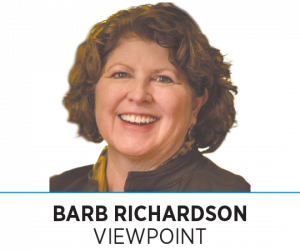Subscriber Benefit
As a subscriber you can listen to articles at work, in the car, or while you work out. Subscribe Now Do you know that in central Indiana, individuals over 50 now make up 26% of the population, marking the fastest-growing demographic segment? Thanks to advancements in health care and lifestyle, a 65-year-old today can anticipate 20 to 30 additional years of vibrant living, which is more than previous generations enjoyed. This demographic shift isn’t just a statistical trend; it signifies a profound cultural and economic transformation that is reshaping how people live, work and contribute to society.
Do you know that in central Indiana, individuals over 50 now make up 26% of the population, marking the fastest-growing demographic segment? Thanks to advancements in health care and lifestyle, a 65-year-old today can anticipate 20 to 30 additional years of vibrant living, which is more than previous generations enjoyed. This demographic shift isn’t just a statistical trend; it signifies a profound cultural and economic transformation that is reshaping how people live, work and contribute to society.
Older adults are challenging the traditional narrative surrounding aging. In today’s society, aging is often associated with decline, limitations and a diminishing sense of relevance. It’s time to revise our perceptions of aging to reflect the reality of a diverse, vibrant and continuously evolving population.
We are entering the era of the “100-plus life,” and we must adapt accordingly. With longer, healthier lives, individuals have more opportunities to make meaningful contributions to society. In light of this shift, it’s crucial to engage in thoughtful discussions to address key questions:
◗ What does it mean to grow up, live and age in a society where a third of the population is over age 65?
◗ How do we need to adjust our systems, policies and cultural biases to accommodate this extended life span?
◗ What opportunities and potential does the “longevity dividend” present for individuals and communities that view older adults as valuable assets?
Moreover, we must acknowledge the invaluable role older adults play in shaping the future. Aging is not equated with obsolescence. In fact, individuals age 65 and above are the fastest-growing segment of the workforce. Remarkedly, 47% of retirees re-enter the workforce, and 50% of all new businesses are initiated by individuals over 50—with significantly higher success rates for founders over 50 and even more so for those over 60.
Reframing aging necessitates a shift in cultural attitudes and societal structures. We must confront ageism in all its forms and create environments that empower older adults to thrive and contribute meaningfully to society. This entails promoting age-friendly policies, fostering intergenerational connections, and investing in programs and services that support healthy aging and active engagement.
While progress is underway, Indianapolis still has room for improvement. Based on AARP’s assessment of the livability factors impacting the well-being of older adults, our city’s index score stands at just 49. It’s time for us to embrace this new era of aging, recognizing the wealth of possibilities and contributions that come with it.•
__________
Richardson is the founding director of Indy Encore, a community organization that assists people age 50 and older.
Please enable JavaScript to view this content.
